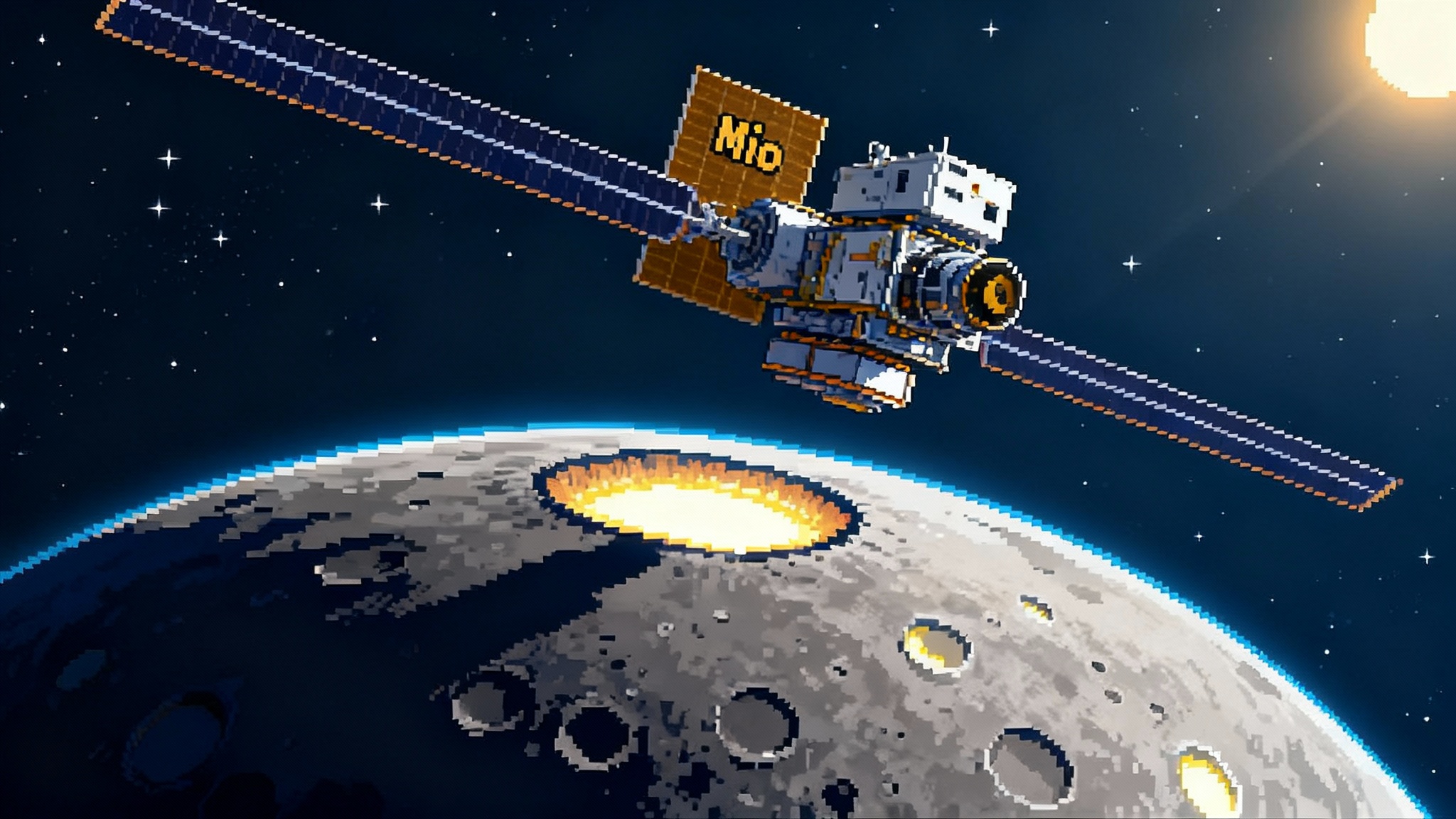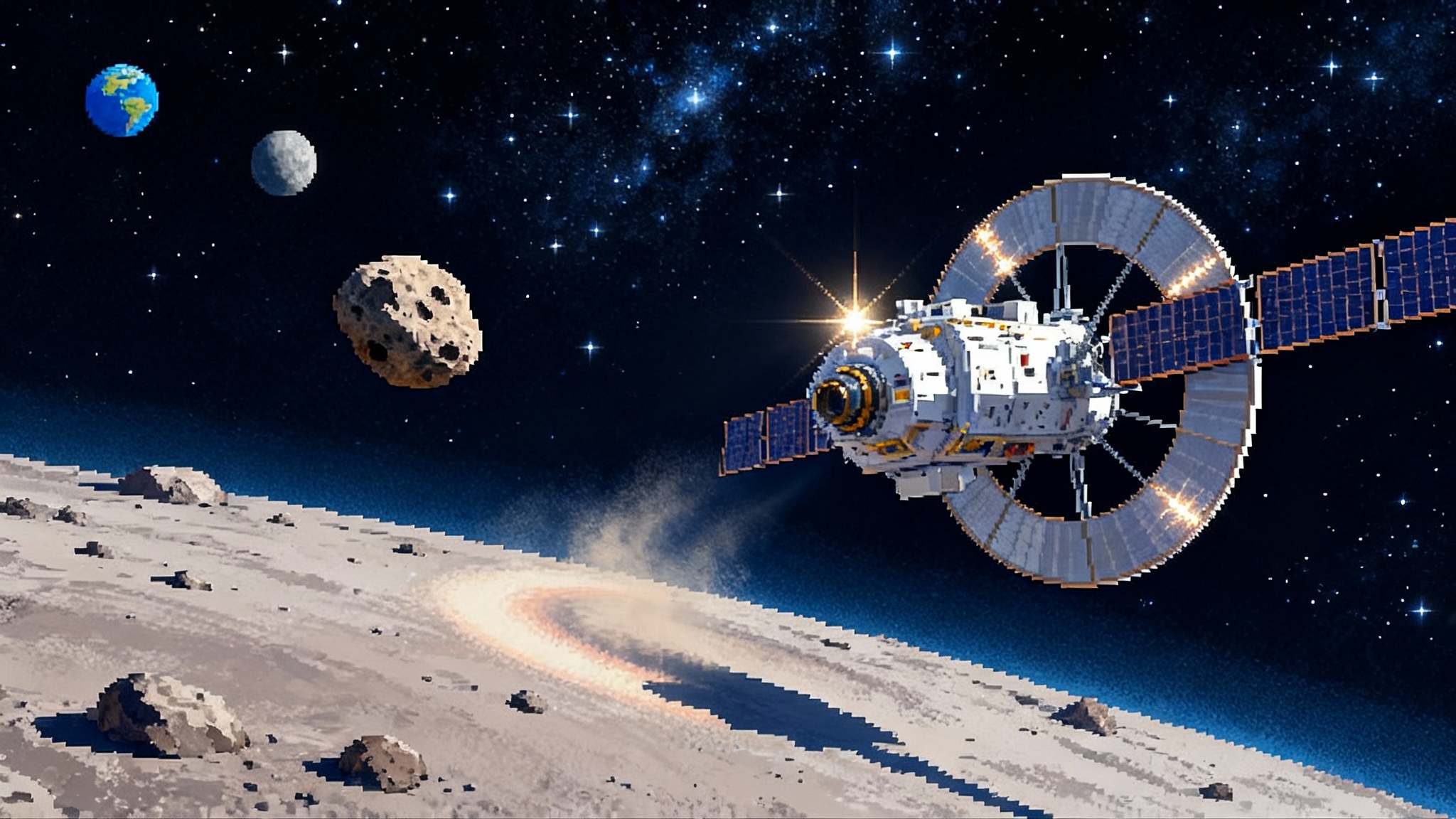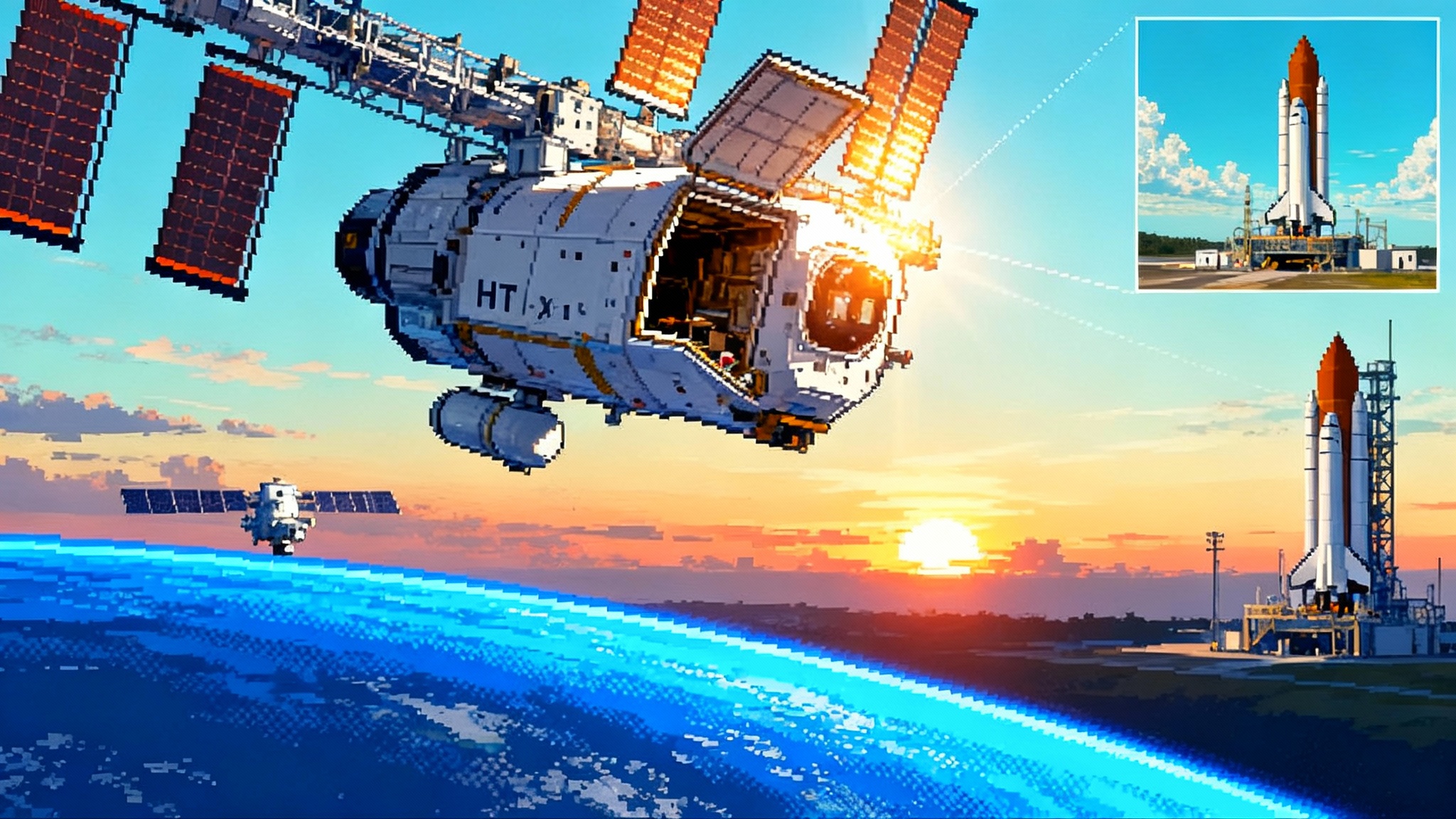New Glenn goes interplanetary: ESCAPADE readies Mars sprint
After reaching orbit on January 16, 2025, Blue Origin’s New Glenn is racing toward a second act: sending NASA’s twin ESCAPADE probes on a fast, lower-cost ride to Mars in an early November window. Here’s how a commercial heavy lifter, smallcraft design, and transfer vehicles are compressing deep-space timelines.

From debut to deep space in one calendar year
On January 16, 2025, Blue Origin’s towering New Glenn cleared the Florida air and reached orbit on its first try. The company confirmed the milestone and said the booster was lost during descent, but the primary goal was achieved: a new heavy lift, partially reusable rocket had made orbit. That success matters beyond bragging rights. It sets up a second act that arrives quickly by spaceflight standards. New Glenn is now slated to aim beyond Earth for NASA, sending the ESCAPADE twin probes toward Mars in a launch window that opens in early November 2025. If the cadence holds, the same rocket family that debuted in January will push planetary science hardware onto an interplanetary trajectory before the year is out. That is a new tempo for deep space.
The shift is not just about speed. It is about a private rocket with reuse in its design moving scientific payloads into the deep space economy. Blue Origin’s public account of the debut flight is the timestamp for that pivot, as Blue Origin confirms NG-1 orbit. The mission also carried a Blue Ring pathfinder riding the second stage, a sign that space tugs and orbital transfer platforms are becoming standard parts of the stack.
What ESCAPADE is really measuring at Mars
ESCAPADE stands for Escape and Plasma Acceleration and Dynamics Explorers. The mission uses two identical satellites, nicknamed Blue and Gold, to answer a deceptively simple question: how does the solar wind strip away Mars’ upper atmosphere and reshape its magnetized environment in real time?
Each satellite carries three instruments that turn the invisible into data:
- Magnetometer to map the strength and direction of magnetic fields.
- Electrostatic analyzer to count and characterize energetic ions and electrons.
- Langmuir probe to measure plasma density and infer how the Sun’s ultraviolet light charges Mars’ ionosphere.
Together, the twins turn Mars into a stereo recording. One orbiter flies through a region of space while the other samples a different pocket. That two point measurement is vital because Mars’ magnetosphere is patchy and hybrid. It is not a global dipole like Earth’s. It is a patchwork quilt of crustal magnetic bubbles that deflect and funnel charged particles in complicated ways. A single probe sees only one thread at a time. Two can watch the pattern shift, echoing the precision of formation telescopes in Proba-3.
Why do this now? The Sun is near the peak of its activity cycle, and peaks bring more flares, more coronal mass ejections, and more turbulence in the solar wind. That added energy is like turning up the speed on a wind tunnel. Mars’ atmosphere and magnetic pockets will respond with stronger currents, sharper boundaries, and faster escape. ESCAPADE is built to catch those dynamics in action, then trace cause and effect from the Sun to the exosphere.
NASA’s overview lays out the mission plainly, including the plan to reach Mars in about 11 months and then spend several months shaping the final orbits for science operations. The timeline fits the current window: depart in late 2025, arrive in 2026, start the prime campaign in 2027. See NASA’s ESCAPADE mission overview.
Why a commercial heavy lifter changes planetary schedules
For decades, deep space science has been gated by a handful of government owned rockets and by planetary alignments that could be missed if a vehicle was not ready. The result was a cadence measured in long waits and painful do overs. A partially reusable commercial heavy lifter inserts slack and flexibility back into the schedule in three concrete ways.
- More throw, fewer compromises: When a rocket can deliver more mass to an escape trajectory, small missions get to carry more propellant or larger antennas. That buys alternative trajectories if the first option slips and allows meaningful cruise corrections without trimming science.
- Reuse narrows learning cycles: Even if the first stage is not recovered on every attempt early on, a design meant for reuse is engineered to fly often. The manufacturing line, ground teams, and software get exercised. Turnarounds tighten. For interplanetary windows that last weeks, shaving days matters.
- Fixed price launch contracts reset incentives: ESCAPADE flies under NASA’s Venture class Acquisition of Dedicated and Rideshare model. That uses commercial practices and a lower, clearly bounded level of mission assurance for small science payloads. It means less bespoke paperwork, fewer top down redesigns, and a stronger push to adapt the payload to the ride rather than vice versa.
The net effect is faster readiness and more options when weather, software, or a valve misbehaves. A slip of a week may still fit the window. A slip of a month might be rescued by a heavier kick stage or a transfer vehicle.
The smallcraft architecture behind the speed
ESCAPADE is a small mission by Mars standards. Each orbiter rides a compact bus built by Rocket Lab. Shrinking the spacecraft yields three compounding benefits that align with commercial lift.
- Factory production, not artisanal builds: Small buses can be built on lines that also produce Earth orbiting satellites. That brings shared suppliers, repeatable test rigs, and predictable costs.
- Under the fairing flexibility: Two small orbiters fit under a standard fairing with room for adapters, tugs, or even a co passenger if the trajectory allows. The rocket does not have to be custom configured.
- Shorter integration timelines: A compact spacecraft with fewer deployables spends less time on cranes and more time in the cleanroom completing system tests. That improves the odds of catching a late window without cutting corners.
Smallcraft does not mean small science. With two points of measurement, ESCAPADE can answer questions that the larger single spacecraft MAVEN mission could not. It is the measurement geometry that matters most.
Blue Ring and the rise of orbital transfer as a service
The pathfinder Blue Ring attached to New Glenn’s upper stage on the debut flight was not an afterthought. It hints at a near term future where the upper stage places a stack in a parking orbit and a transfer vehicle completes the job. Think of the rocket as the cargo ship to port and the transfer vehicle as the tugboat guiding vessels to their final berths across the harbor.
For interplanetary payloads, that harbor is vast. A transfer platform can perform:
- Perigee raise or plane changes to line up a precise escape burn.
- Thermal and power conditioning to keep small probes healthy during phasing.
- Rideshare separation that staggers deployments to reduce collision risk and radio interference.
In practical terms, this decouples liftoff day from interplanetary injection day. If weather kills a single day, the transfer vehicle can re target the burn on the next orbit. If the launch slips a week, the tug can absorb the difference with a slightly different geometry. As missions scale, expect communications upgrades too, including deep space laser internet trials.
Solar maximum as a science accelerator
Solar maximum is sometimes described only as a risk factor. For ESCAPADE, it is an amplifier and a clarifier. Stronger solar wind pressure compresses Mars’ plasma boundaries closer to the planet. That makes it easier to fly through steep gradients quickly and to measure how they move in minutes rather than hours or days.
Consider a weather analogy. If you want to understand how a river erodes its banks, you can camp by a lazy bend for a month and take slow measurements. Or you can sample during spring snowmelt when the water rises and scours the channel in real time. ESCAPADE will measure Mars during the equivalent of snowmelt. Magnetic reconnection, ion pickup, and current sheet ripples should all be more obvious. That means clearer answers sooner.
Compression of cost and time, with numbers that matter
Planetary missions have traditionally paid launch prices that reflect all up, bespoke risk posture. Two trends are resetting that math.
- Partially reusable heavy lifters spread fixed costs across many flights. The per kilogram cost to Earth orbit drops, and the premium to go interplanetary narrows.
- Venture class contracts set a ceiling for what NASA is willing to spend to deliver small science to space. When the launch service is bounded, engineers trade options inside the payload instead of lobbying for a more expensive ride.
The practical outcome is not just cheaper launches. It is freedom to fly more often, try bolder measurement geometries, and accept that not every instrument needs a billion dollar spacecraft around it. The late 2020s could see planetary missions with the cadence and experimentation style of Earth observation constellations, anchored by heavy lifters that treat interplanetary injection as another line item on the manifest.
What changes on the ground in Florida
A higher commercial cadence is not only a factory story. It is a range and pad story. New Glenn operates from Launch Complex 36. Faster turnarounds demand:
- Standardized pad operations where cryogenic loading, engine chill, and automated safing flow the same way across missions.
- Range scheduling tools that absorb scrubs without creating multiweek gaps.
- Parallel processing at nearby integration facilities so spacecraft do not queue for cranes.
These are the kinds of operational improvements that let a rocket debut in January and mount a Mars shot by November. They also reduce the penalty of a one or two day slip inside a planetary window. Instead of going to the back of a long line, a mission shifts by a few shifts.
What to watch in the ESCAPADE window
- Final integration: The twins will be fueled and mated to their adapter in Florida. Fueling is where many small missions meet their schedule reality because propellants make handling and safety margins stricter. A clean fueling flow is the tell that the schedule is real.
- Upper stage coast and restart: The path to trans Mars injection involves a precise coast and burn. Watch for confirmation of a clean restart, accurate guidance, and nominal separation timing.
- Booster recovery attempt: New Glenn is designed for reuse. An at sea landing would reduce future launch costs and signal maturing operations. Even if recovery is not required for ESCAPADE, it matters for cadence.
Why this milestone signals a new deep space era
Two forces are converging. First, smallcraft architectures let scientists put sophisticated instruments on platforms that do not need bespoke rockets. Second, commercial heavy lift with partial reuse is pulling the price and schedule of interplanetary injection into the realm of routine service. The result is a fly more pattern that rewards iteration.
This is not a hypothetical. The year already shows the arc: New Glenn reached orbit on January 16. The second flight aims to push ESCAPADE toward Mars in early November. If that holds, it creates a template where a new launcher can mature while carrying real science instead of spending years trapped in test flight purgatory.
Concrete implications for the late 2020s
- Planetary portfolios diversify: Agencies can field more two spacecraft missions to capture spatial dynamics rather than betting everything on one flagship with a single vantage point.
- Greater use of transfer vehicles: Blue Ring style platforms will become the default companion for deep space payloads, providing margin on timing and propulsive flexibility. Expect menus of services, from plane changes to deep space communications support during cruise.
- Faster learning cycles: When launch frequency rises, teams can apply lessons from one mission to the next within eighteen months instead of waiting five years. That compounds reliability and lowers integration risk.
- New university and startup roles: Smaller, focused payloads unlock principal investigator teams that could not shoulder a flagship. The barrier to entry drops from hundreds of millions to tens of millions for meaningful science in deep space, as seen with agile missions like OSIRIS-APEX to shadow Apophis.
Actions that matter now
- Mission designers: Architect for two point or multi point sampling. The launch market will support multiple small orbiters if the science return is clear. Write requirements that assume transfer vehicle support, not just a single upper stage burn.
- Program managers: Lock launch services early under fixed price models, then protect payload scope from creeping back into bespoke integration. Use decision gates tied to fueling, not just to delivery to the cleanroom.
- Operators: Rehearse planetary window scrubs. Treat plus or minus three days as part of the plan, with communications, thermal, and power budgets that handle a longer phasing before escape.
The takeaway
If New Glenn lights again this fall with ESCAPADE on top, deep space science will have crossed a threshold. A privately built, partially reusable heavy lifter will have delivered an interplanetary injection within a year of its first orbital flight. The payload will be a pair of small but sharp instruments designed to read Mars during a lively Sun, and the ride will likely be supported by a transfer platform that treats timing as a solvable engineering problem rather than a celestial cliff.
That combination is the blueprint for the late 2020s: smallcraft, smart transfers, and a rising commercial cadence that treats the gap between orbit and interplanetary space as a service you can schedule. The promise is not a vague faster and cheaper future. It is a practical, already emerging present, where more missions chase better questions, more often, with rides that are ready when the planets line up.








